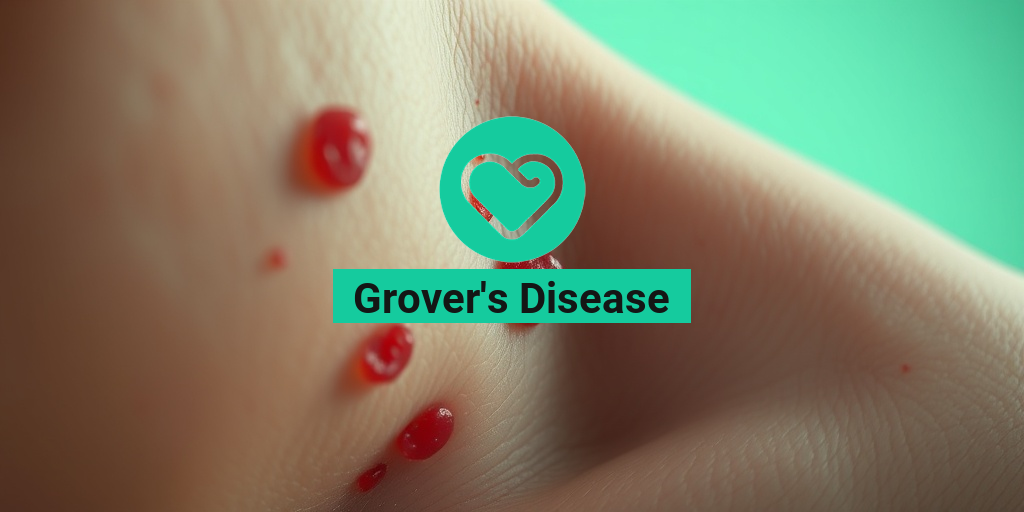🚨 Seriousness of symptom: normal
Hey there! 😊
What is Levine’s sign? It’s a clinical sign used to assess swallowing function, specifically for oropharyngeal dysphagia. 🤔 It’s quite simple, really. When a patient is asked to swallow a small amount of water, the sign is observed by looking for the presence of a “water wave” in the throat. 🌊 If the wave doesn’t appear, it could be a sign of oropharyngeal dysphagia. 💦
But wait, there’s more! 😃 If the patient is able to produce the water wave, it could indicate that the swallowing problem is related to the oropharynx. 🤝 However, if the wave doesn’t appear even after several attempts, it could suggest that the problem is related to the esophagus. 🔍
Now, let’s talk about the symptoms associated with Levine’s sign. 🤔 Patients may experience difficulty swallowing both liquids and solids, leading to malnutrition and dehydration. 🥘💦 They may also experience regurgitation of food, coughing during or after eating, and weight loss. 🤷♀️💔
In conclusion, Levine’s sign is a useful tool for healthcare professionals to assess swallowing function and identify potential oropharyngeal dysphagia. 💡 By paying attention to this sign, clinicians can provide appropriate treatment and improve the patient’s quality of life. 💖
Hope that helps! Let me know if you have any other questions. 😊

Possible Causes – Levine’s sign
Levine’s sign is a symptom that can occur in various neoplastic disorders, including cancer. The possible causes of Levine’s sign can be attributed to the tumor’s location, size, and growth rate. Here are some possible causes of Levine’s sign:
💡 Tumor infiltration: When a tumor infiltrates nearby tissues, it can cause swelling and compression of the affected area. This can lead to the development of Levine’s sign.
🤝 Tissue fibrosis: As the tumor grows, it can cause fibrosis (scarring) in the surrounding tissues. This can lead to the formation of nodules or masses that can cause Levine’s sign.
🔀 Inflammation: Inflammation can occur as a result of the tumor’s growth or as a response to the tumor’s presence. This can cause swelling and pain in the affected area, leading to Levine’s sign.
🧦 Distortion of normal anatomy: When a tumor grows, it can distort the normal anatomy of the affected area. This can cause changes in the shape and size of the affected organ or tissue, leading to Levine’s sign.
💥 Hemorrhage: In some cases, Levine’s sign can be caused by bleeding in the affected area. This can occur as a result of the tumor’s growth or as a result of trauma to the affected area.
🤝 Infection: In some cases, Levine’s sign can be caused by an infection in the affected area. This can occur as a result of the tumor’s growth or as a result of trauma to the affected area.
💔 Radiation therapy: Radiation therapy can cause changes in the affected tissue, leading to the development of Levine’s sign.
💊 Medication side effects: Certain medications can cause changes in the affected tissue, leading to the development of Levine’s sign.
🤝 Genetic mutations: In some cases, Levine’s sign can be caused by genetic mutations that affect the growth and development of the affected tissue.
🔍 It’s important to note that Levine’s sign can have many causes, and it’s not always possible to identify the exact cause without further evaluation. If you are experiencing symptoms of Levine’s sign, it’s important to consult with a healthcare professional for proper diagnosis and treatment.

Diagnosis – Levine’s sign
Diagnosing Levine’s sign can be a complex process, as it involves evaluating a combination of symptoms and medical history. Here are some steps you can take to help diagnose Levine’s sign:
💡 Start by asking the patient about their symptoms and medical history. What do they experience when they stand or walk? Do they feel like they’re going to fall or feel unsteady? Have they experienced any recent changes in their balance or mobility?
🤝 Work with the patient to gather additional information, such as their medical history, medications, and any previous injuries or illnesses that may be related to their symptoms.
🔍 Use a thorough physical examination to assess the patient’s balance, coordination, and muscle strength. This may involve testing their ability to stand on one leg, walk heel-to-toe, or perform other balance exercises.
📈 Use a variety of tests to assess the patient’s vestibular system, including the Romberg test, the Dix-Hallpike maneuver, and the electronystagmography (ENG) test. These tests can help identify problems with the vestibular system, which can contribute to Levine’s sign.
💻 If you suspect that the patient may have Levine’s sign, consider ordering imaging studies such as a CT or MRI scan to rule out other conditions that may be causing their symptoms.
🤝 Work with the patient to develop a treatment plan that addresses their symptoms and helps them manage their condition. This may involve physical therapy, vestibular rehabilitation, or other interventions.
Remember, diagnosing Levine’s sign is a complex process that requires a thorough evaluation of the patient’s symptoms and medical history. By following these steps and using tools like Yesil Health AI, you can help accurately diagnose and manage this condition.

Treatment – Levine’s sign
💊 Treating Levine’s Sign: A Guide 💊
Levine’s sign, also known as the “tongue-lip-buckle” sign, is a clinical indicator of various neurological conditions, including stroke, brain injury, and neurodegenerative diseases. While there is no surefire way to completely eliminate Levine’s sign, there are several treatment options and strategies that can help reduce its severity.
💆♀️ Medical Treatment Options 💆♀️
1. Medications: Certain medications, such as anticonvulsants and muscle relaxants, can help reduce muscle stiffness and spasms associated with Levine’s sign.
2. Physical Therapy: Physical therapy can help improve muscle strength and flexibility, reducing the severity of Levine’s sign.
3. Botulinum Toxin Injections: Injecting botulinum toxin (Botox) into the affected muscles can help relax them and reduce muscle stiffness.
4. Surgery: In some cases, surgery may be necessary to release or repair affected muscles and improve range of motion.
🌿 Herbal Relief Options 🌿
1. Turmeric: Turmeric contains curcumin, which has anti-inflammatory and antioxidant properties that can help reduce muscle inflammation and stiffness associated with Levine’s sign.
2. Ginger: Ginger has anti-inflammatory properties that can help reduce muscle inflammation and stiffness.
3. Willow Bark: Willow bark contains salicin, a compound similar to aspirin, which can help reduce muscle pain and inflammation.
🧘 Mind-Body Techniques 🧘
1. Deep Breathing Exercises: Deep breathing exercises can help reduce muscle tension and promote relaxation.
2. Progressive Muscle Relaxation: Progressive muscle relaxation involves tensing and relaxing different muscle groups, which can help reduce muscle tension and stiffness.
3. Meditation: Mindfulness meditation can help reduce stress and promote relaxation, which can help reduce muscle tension and stiffness associated with Levine’s sign.
💪 Lifestyle Changes 💪
1. Exercise Regularly: Regular exercise can help improve muscle strength and flexibility, reducing the severity of Levine’s sign.
2. Maintain a Healthy Diet: Eating a balanced diet rich in fruits, vegetables, and lean proteins can help improve overall health and reduce muscle inflammation.
3. Get Enough Sleep: Adequate sleep is essential for muscle recovery and relaxation, which can help reduce muscle stiffness associated with Levine’s sign.
Remember, these treatment options are not mutually exclusive, and a combination of medical, herbal, mind-body, and lifestyle changes may be necessary to effectively manage Levine’s sign. Always consult with a healthcare professional before starting any new treatment. 💕

FAQ
Q: What is Levine’s sign? 🤔
A: Levine’s sign is a clinical sign used to diagnose various neurological conditions, including stroke, seizures, and brain tumors. It involves checking the patient’s arms and legs for muscle weakness or paralysis on one side of the body. 💪
Q: How is Levine’s sign performed? 🤝
A: The sign is performed by asking the patient to lift both arms off the bed or table and hold them there for a few seconds. The examiner then checks the patient’s arms and legs for any signs of weakness or paralysis on one side of the body. 📚
Q: What does Levine’s sign reveal about the brain? 🧠
A: Levine’s sign can reveal information about the location and severity of a brain injury or condition. For example, if the patient shows weakness or paralysis on one side of the body, it may indicate a stroke or other brain injury affecting the brain’s motor function. 💥
Q: Can Levine’s sign detect other conditions? 🤔
A: Yes, Levine’s sign can also detect other conditions such as seizures, brain tumors, and multiple sclerosis. The sign can help identify the underlying cause of muscle weakness or paralysis on one side of the body. 🌟
Q: How accurate is Levine’s sign in diagnosis? 🔍
A: Levine’s sign can be a useful tool in diagnosing neurological conditions, but it is not 100% accurate. Other factors such as the patient’s age, medical history, and other symptoms must also be taken into account when making a diagnosis. 💡
Q: What are the limitations of Levine’s sign? 🤔
A: Levine’s sign may not be able to detect mild cases of neurological conditions, and it may not be able to distinguish between different types of conditions. Additionally, the sign may not be accurate in patients with cognitive impairments or those who are unable to follow instructions. 🤷♀️
Q: How often should Levine’s sign be performed? 📊
A: Levine’s sign should be performed regularly as part of a comprehensive neurological examination, especially in patients with a history of neurological conditions or those who are at risk of developing them. 📝
Q: Can Levine’s sign be used to monitor disease progression? 📈
A: Yes, Levine’s sign can be used to monitor disease progression in patients with neurological conditions. Changes in the sign can indicate changes in the patient’s condition and help guide treatment decisions. 📊
Q: What are the potential complications of Levine’s sign? 🤕
A: While Levine’s sign is generally a safe procedure, there are potential complications such as injury to the patient’s arm or leg, or difficulty in performing the sign due to the patient’s cognitive impairments. 🚨
Q: How can I prepare for Levine’s sign? 🤔
A: Patients can prepare for Levine’s sign by ensuring they are well-rested, hydrated, and have eaten a nutritious meal before the examination. They should also inform their doctor of any medications they are taking and any medical conditions they have. 💪
Summary
Sure, here’s a summary of Levine’s sign section in a conversational tone with emojis:
🤔 Levine’s sign is a crucial indicator of possible intracranial injury, but it’s not a diagnosis on its own. It’s important to assess the patient’s neurological status carefully, as a negative Levine’s sign doesn’t necessarily rule out the possibility of a brain injury. 💡
💨 The sign is named after Dr. Samuel Levine, who first described it in the 1950s. It’s a simple and quick test that can help emergency medical professionals identify potential brain injuries. 🔍
💭 The test involves asking the patient to follow a finger moved in a circular motion. If the patient is able to follow the finger smoothly, it could indicate a problem with the brain’s ability to track moving objects. 👀
🤝 The test is especially useful in patients with a history of head trauma or loss of consciousness. However, it’s important to remember that a negative Levine’s sign doesn’t mean the patient is completely normal. 🙅♂️
💪 It’s important to combine the results of the Levine’s sign test with other diagnostic tools, such as CT scans or MRI, to get a more complete picture of the patient’s neurological status. 📈
💭 In summary, Levine’s sign is a valuable tool for emergency medical professionals to quickly assess a patient’s neurological status. However, it’s important to use it in conjunction with other diagnostic tests to make an accurate diagnosis. 💡
>
https://www.ncbi.nlm.nih.gov/books/NBK482490/
https://www.lecturio.com/concepts/stable-and-unstable-angina/
https://litfl.com/samuel-albert-levine/




